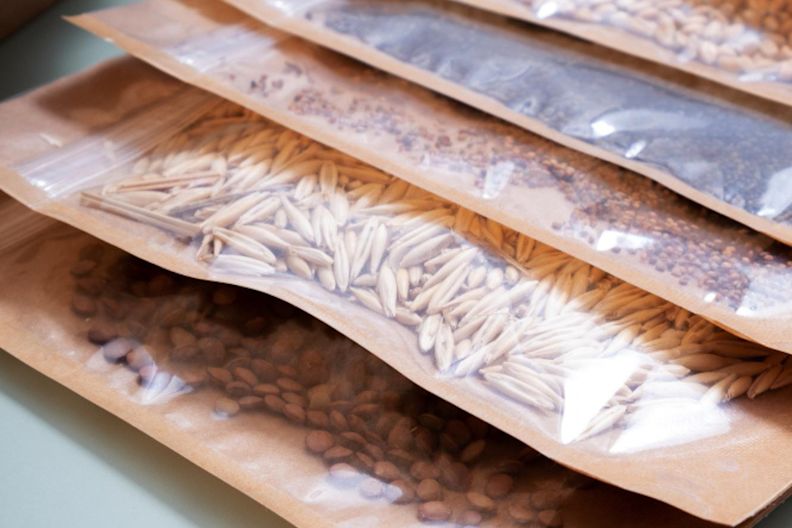Plastic vs. Paper Packaging: Finding the Balance Between Sustainability and Practicality

When it comes to sustainable packaging, few topics spark more debate than plastic versus paper. Both materials have their pros and cons, environmentally, commercially and practically, and businesses today are under more pressure than ever to make the right choice for their products, customers and brand image.
At Paramount Packaging Systems, we understand the complexities behind this discussion. Having worked within packaging machinery for over 30 years, we’ve seen first-hand how the right choice often depends on far more than just material type.
So, what are the key considerations when weighing up paper and plastic packaging?
Sustainability
Paper:
Paper is often seen as the “greener” choice, renewable, recyclable and biodegradable. It’s made from natural fibres, which can decompose over time and are less harmful if they enter the environment. However, paper production is far from impact-free. It requires significant water and energy use and when coatings or laminates are added for strength or moisture resistance, recyclability can become more complicated.
Plastic:
Plastic has long been criticised for its persistence in the environment, but it’s also incredibly resource-efficient. Lightweight and durable, it often requires less energy to produce and transport than paper equivalents. Advances in recycling and the introduction of bio-based and compostable plastics are improving its environmental credentials, though global recycling rates remain relatively low.
Verdict:
From a pure sustainability standpoint, both materials can be environmentally responsible, or not, depending on how they’re sourced, used and disposed of. The real challenge lies in designing packaging systems that make recycling and recovery easy and effective.
Practicality
Paper:
Paper offers a tactile, natural aesthetic that aligns with many brands’ eco-friendly values. However, it’s more prone to tearing and less resistant to moisture and grease.
This limits its suitability for certain products, particularly in the food industry, where protection, barrier properties and shelf life are key
Plastic:
Plastic remains the most versatile material on the market. It provides excellent sealing, strength and barrier protection against oxygen and moisture, helping preserve freshness and reduce food waste, a critical but often overlooked environmental factor. Plastic also allows for high-speed packaging operations and flexible pack designs.
Verdict:
From a performance and functionality viewpoint, plastic still has the upper hand for many applications, though ongoing innovation is steadily improving the practicality of paper-based alternatives.
Commerciality
Paper:
Switching to paper packaging can be more expensive due to higher material costs, slower production speeds and shorter shelf life for certain products. However, many brands are willing to absorb or pass on these costs to appeal to environmentally conscious consumers.
Plastic:
Plastic continues to offer cost advantages, especially for high-volume production. Its lower weight helps reduce transportation costs and carbon footprint per unit, but companies face increasing taxes and levies for non-recyclable or virgin plastic use.
Verdict:
The commercial balance depends largely on customer expectations, regulatory pressures and the scale of operations. For many businesses, a blended approach, using both materials strategically, offers the best long-term value.
Striking the Right Balance
The reality is that there’s no one-size-fits-all answer. The most sustainable solution often combines material innovation, efficient packaging design and responsible end-of-life management. For some, that means transitioning to recyclable plastics or compostable films; for others, it means exploring paper-based laminates that maintain strength and barrier performance.
Paramount Packaging Systems Supports Both
At Paramount Packaging Systems, we believe flexibility is key. Our range of Fuji Flow Wrappers is designed to handle both plastic and paper-based packaging materials, giving manufacturers the freedom to adapt as sustainability goals, regulations and customer preferences evolve.
Whether you’re continuing with traditional plastic films, transitioning to recyclable mono-materials or trialling new paper laminates, our Fuji machinery delivers the speed, precision and reliability you need, without limiting your material choices.
The debate between paper and plastic isn’t about which is ‘better’, but about finding the right solution for your product, process and sustainability goals. With technology that accommodates both, Paramount Packaging Systems helps you stay competitive, compliant and ready for the future, whatever direction the market takes.
If you are reviewing your packaging systems, contact the Paramount Packaging Systems team today on 01252 815 252 or email fuji@paramount-packaging.co.uk.